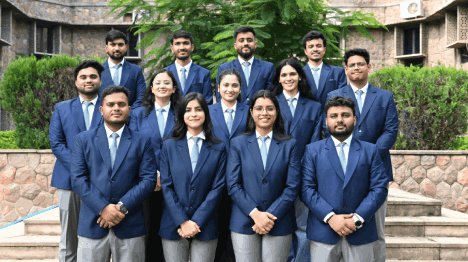- About Us
- Academics
Schools
Programs
General Information
- Faculty
The faculty members and researchers working at IIHMR University come from varied backgrounds including, but not limited to medicine, public health, management, economics, statistics, demography, human geography, social and behavioral sciences, rural development and pharmaceuticals.
- Admissions
- Research
.Publications & Journal
- Executive Education
Executive Programmes
- Online Certification Courses
ONLINE CERTIFICATION Courses
- Training
- Placements
- Fee Payment
- NAAC
- IQAC
- NIRF
- Webinars
- About Us
- About IIHMR University
- Board of Management
- Academic Council
- Board of Studies
- Research Board
- Institutional Review Board
- Finance & Audit Committee
- Departmental Research Committee
- Chairperson's Message
- President's Message
- IIHMR University Act
- Infrastructure
- Collaboration
- Ranking
- Board of Studies (School of Digital Health)
- Awards & Accolades
- Academics
- Institute of Health Management Research
- School of Pharmaceutical Management
- School of Development Studies
- School of Digital Health
- SD Gupta School of Public Health
- MBA (Hospital and Health Management)
- MBA (Pharmaceutical Management)
- MBA (Development Management)
- MBA (Healthcare Analytics)
- Master of Public Health
- Student Manual – Cohort 9 (2021-2023)
- Master of Public Health Offered by Johns Hopkins Bloomberg School of Public Health, USA in cooperation with IIHMR University, Jaipur, India
- Ph. D.
- MBA CSR & ESG Management (Executive)
- MBA Sustainable Business Management (Executive)
- Common Information for all the Programs
- Academic Calendar
- Student Handbook 2020-21
- Committees
- Policies
- Annual Exam Calendar
- Library
- Faculty
- Officers of University
- Dean of Institute of Health Management Research
- Dean of School of Pharmaceutical Management
- Dean of School of Development Studies
- Dean of SD Gupta School of Public Health
- Dean of School of Digital Health
- School of Digital Health
- Faculty List A to Z
- Faculty List Designation Wise
- Faculty List School Wise
- Admissions
- Research
- Executive Education
- Training
- Placements
- Alumni
- Events
- Job Openings
- Contact
- Research
Cost-benefit Analysis of Adolescent Health Interventions for Andhra Pradesh
Agency : copenhagen consensus
With about nine million adolescents among its total population of 49 million, Andhra Pradesh has one fifth of its total population in the age group of 10-19 years, offering a potential demographic dividend to the state’s economy. However, the full contribution of these adolescents can be utilized only if they are given the opportunity to develop their potential to the maximum possible extent. The unique health needs of this age group during their transition from childhood to adulthood are often neglected; this can have both immediate as well as long-term repercussions.
In this study, the authors have analyzed three key issues affecting the development of adolescents in Andhra Pradesh – high rate of child marriage, widespread anemia among adolescent girls and mental health disorders. The authors have reviewed the status and magnitude of these problems and have also analyzed prospective interventions for addressing these challenges using the cost-benefit analysis approach. They have found that interventions aimed at delaying child marriage through incentives in-kind, preventing anemia among adolescent girls through iron and folic acid supplementation, and protecting the mental health of all adolescents through screening and evidence-based care can yield higher benefit per unit of cost incurred. The analysis is based on sound secondary evidence in terms of data and other findings. The cost effectiveness will provide the rationale for policy makers to adopt these interventions to improve adolescent health in the state.
The study findings show that investment made on delaying child marriage via direct incentives, preventing anemia among adolescent girls, and School based behavioral screening and further mental health services for the adolescents have benefit-cost ratios of 3.0, 14.9, and 2.4 respectively at 5 percent discount rate.



